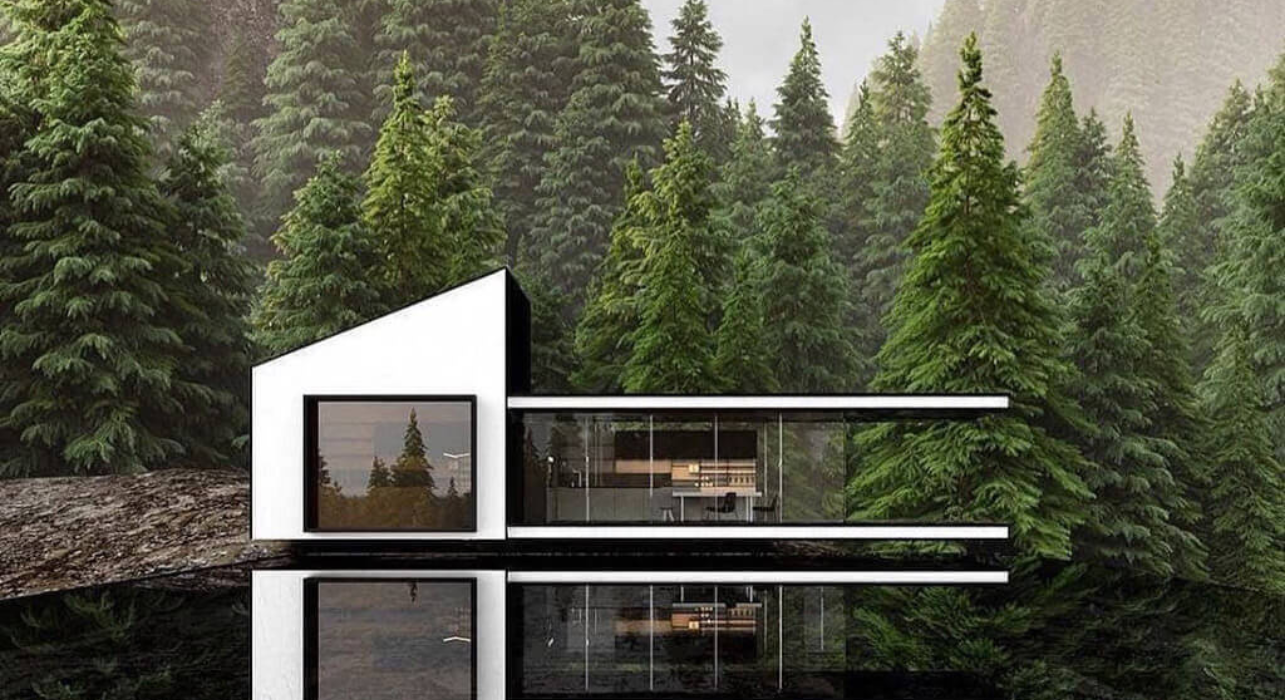Exploring the Advantages of Modern Home Design in Contemporary Design
The expedition of contemporary home design within contemporary design exposes an advanced interplay in between visual allure and practical effectiveness. By prioritizing elements such as power effectiveness, improved interior air high quality, and liquid changes in between interior and outdoor rooms, contemporary layouts cater to the evolving requirements of today's homeowners.
Boosted Energy Performance
In modern-day home architecture, one commonly finds a considerable emphasis on enhanced power effectiveness, which is critical in resolving increasing power prices and environmental concerns. Engineers and contractors are progressively integrating cutting-edge style approaches and advanced modern technologies to optimize power use in domestic spaces. This paradigm shift is driven by a growing awareness of sustainability and the requirement to decrease carbon footprints.
Secret attributes of energy-efficient homes include remarkable insulation, energy-efficient windows, and making use of sustainable products. These design components function in tandem to reduce warmth loss in wintertime and minimize warm gain in summer, making certain a comfortable living environment year-round. Additionally, contemporary homes usually incorporate renewable resource sources, such as solar panels, which not only decrease reliance on non-renewable power however likewise give potential cost financial savings for house owners.

Enhanced Indoor Air Quality
Focusing on boosted indoor air top quality has come to be a trademark of contemporary home architecture, as house owners increasingly acknowledge the importance of a healthy living setting. Contemporary design incorporates advanced products, ventilation systems, and wise technology to promote cleaner air within household spaces.

Moreover, the design of contemporary homes frequently highlights all-natural ventilation, enabling fresh air to flow and reducing reliance on man-made environment control. Strategically put home windows, skylights, and vents facilitate airflow, adding to an environment that deals with interior air stagnation.
On top of that, integrating biophilic layout components, such as indoor plants, not only enhances aesthetic charm yet additionally serves to detoxify the air. modern home architecture melbourne. On the whole, by focusing on improved indoor air high quality, contemporary home style not just boosts the convenience and health of its occupants but also promotes a lasting living setting that aligns with modern health and health criteria

Smooth Indoor-Outdoor Link
As contemporary house owners look for to enhance their living experiences, the principle of a smooth indoor-outdoor link has gained considerable grip in modern architecture. This design philosophy blurs the limits in between indoor rooms and the native environment, advertising a harmonious coexistence that enriches life.
Architectural aspects such as large gliding this contact form glass doors, huge home windows, and open flooring strategies promote this link, permitting rooms to move effortlessly from indoors to outdoors. These features not only develop a feeling of visibility yet additionally urge involvement with nature, which can have extensive impacts on psychological wellness.
In addition, a smooth indoor-outdoor link improves the performance of living areas. Outdoor areas can act as expansions of the home, suiting numerous tasks such as dining, entertaining, or relaxation. By incorporating landscape design and outdoor home furnishings that complement interior decoration, home owners can develop welcoming environments that cater to varied way of lives.
Additionally, this architectural strategy often stresses sustainability, as all-natural ventilation and passive air conditioning strategies minimize reliance on artificial environment control. Eventually, embracing a seamless indoor-outdoor connection cultivates a much more dynamic, dynamic, and health-conscious living experience.
Maximizing All-natural Light
Natural light is a key component in contemporary home architecture, dramatically improving both aesthetic charm and occupant wellness. The tactical incorporation of big windows, skylights, and open rooms allows all-natural light to flood insides, creating lively and inviting settings. This design technique not only raises the visual charm of a home but likewise cultivates a connection to the outdoors, advertising a sense of harmony and openness.
Moreover, making the most of all-natural light adds to energy performance, reducing reliance on fabricated lighting throughout the day. Homes developed with this concept in mind often feature reflective surface areas and light materials that magnify the results of natural light, making sure that rooms feel bright and airy. This not just boosts comfort but likewise decreases power costs.
Furthermore, direct exposure to all-natural light has actually been linked to improved mood and efficiency amongst passengers. By creating well-lit spaces that encourage communication and task, modern style can substantially impact the lifestyle within the home. Ultimately, the thoughtful integration of natural light is a trademark of modern style, mixing capability with elegance while cultivating a healthier living atmosphere.
Modification and Adaptability
The focus on maximizing natural light in modern home architecture seamlessly complements the concepts of modification and adaptability. This building technique provides to private choices, permitting home owners to customize their living areas to satisfy their distinct needs and lifestyles. Modification in layout allows the combination of personal aesthetic appeals, whether through the selection of products, color combinations, or spatial configurations.
Adaptability is an additional foundation of contemporary building patterns, helping with flexible living atmospheres that can develop over time. Open up floor plans, movable dividings, and multifunctional areas are essential functions that sustain dynamic living arrangements. These i loved this facets equip homeowners to develop areas that can change for different purposes-- whether for job, leisure, or social celebrations-- improving use without jeopardizing read more design.
Moreover, the integration of wise home modern technology further enhances personalization. Inevitably, modification and flexibility in contemporary home architecture cultivate a deeper link between individuals and their living areas.
Final Thought
In recap, modern-day home style in contemporary design presents various advantages, including improved power efficiency, improved indoor air quality, seamless indoor-outdoor connections, maximized all-natural light, and increased customization options. These elements collectively add to much healthier living settings and advertise lasting practices, ultimately benefiting both property owners and the broader community. The innovative integration of visual appeals and functionality within modern style not just raises the lifestyle but also sustains a much more environmentally aware future.